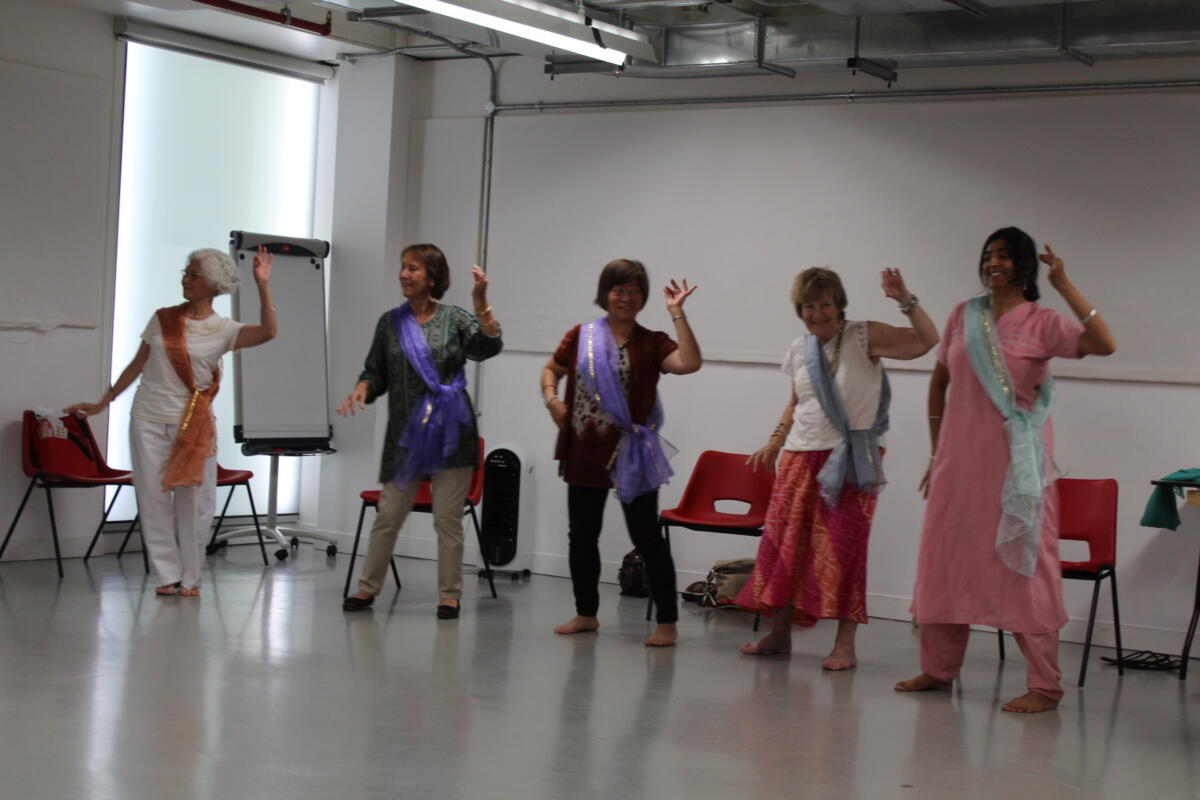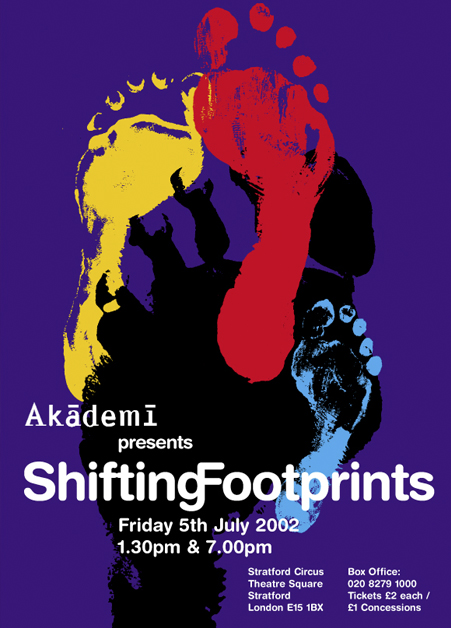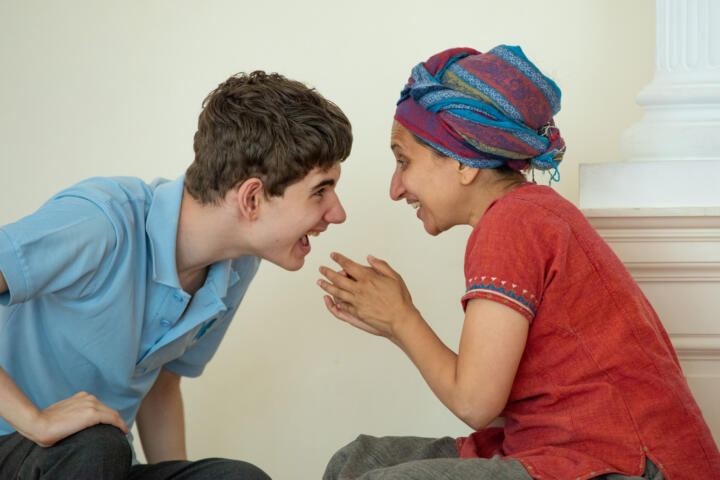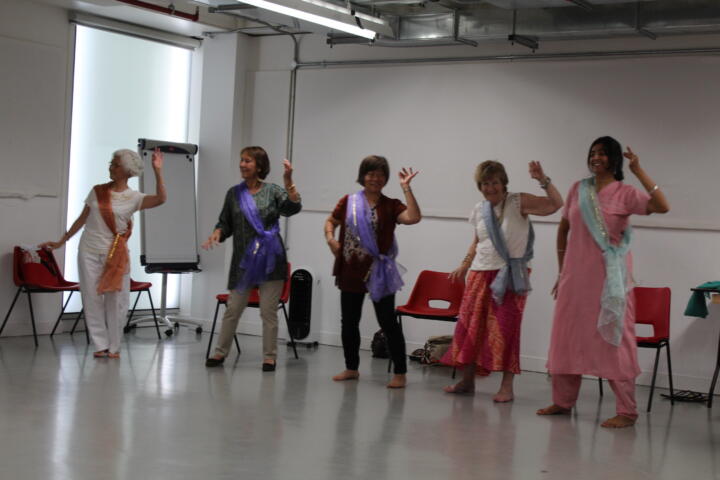A deep dive into benefits of South Asian Dance in Education and Community settings

By Rebecca Price
This year, we have embarked on an enormous archiving adventure to celebrate Akademi’s heritage and preserve our history at the V&A Museum. We have some wonderful volunteers who are helping us in this process. We invited them to share their experience, work and findings on South Asian dance in the UK.
Throughout our history, Akademi has always aimed to seek out new schools and communities to engage with through our Learning and Participation programmes. In this blog, Rebecca Price will be exploring some of the opportunities offered to different groups, and what benefits South Asian Dance has brought to these audiences.
As part of the recent Akademi archives volunteering project, I was given the task of creating call up lists for the boxes stored in the archives. These call up lists included a list of boxes present in the organisation’s collection under a particular topic, such as education and artist development, as well as descriptions of what is present in each box and the dates they span across. While creating these lists, I found a good deal of material on the educational programmes run by Akademi and wanted to find out more, to see what Akademi is doing today to educate both schools and local communities on South Asian dance and the benefits it can bring.

Working with schools
For the past 30 years, Akademi has worked with many schools in and around London to help support their National Curriculum Physical Education targets by running various sessions and projects centred around South Asian dance. Some of these projects have culminated in performances that have brought schools together through this art form, such as the ‘Shifting Footprints’ event in 2005.
This event brought together four primary schools who had taken part in the ‘Migrations’ creative writing and dance project run by Akademi and two other organisations in Newham, as well as those who had taken part in the ‘Dance Connect’ project which was centred around the performing arts in the National Curriculum. The event was a mixture of both dance and other creative outputs such as poetry. It demonstrated the artistic potential South Asian dance could have to inspire young people to express themselves in many ways.
‘ROaR’ – New perspectives
Perhaps one of the most recent and innovative educational projects Akademi has created is ‘Reach Out and Reveal’. This initiative is aimed at supporting children with special educational needs through South Asian dance. Akademi places professional dance practitioners in these schools. The project centres primarily around young people on the autism spectrum and focuses on how using South Asian dance as an outlet can help them with any physical or communication difficulties they may face on a day to day basis.

Some of the biggest challenges these young people with ASD face revolve around interaction with others and being able to think creatively and regulate their own movements and behaviors. Akademi has found that through this project, many of the children who took part had become more confident in their interactions with peers in group settings, improved their ability to express themselves both emotionally and creatively and had also improved in their ability to control their physical movements. The sessions are also highly adapted to suit each student’s energy levels on a day to day basis, and the artists are careful to adjust sessions accordingly in order to maximise participation. These adjustments allow the artists to gain the trust of the students more easily and even lead to improved participation from students who would otherwise avoid group activities or taking part in drama or dance activities.
As well as providing a new source of support for the children, the project has also given many of the school staff a new perspective on what young people with autism can achieve and how to further facilitate their success. For example, one staff member at Papillion House, one of the schools participating in the project, commented, ‘it’s really developed my understanding that children with autism can pretend and imagine scenarios they’re not actively involved in’, therefore highlighting how the project itself is now challenging pre-existing views that young people with autism are limited in their imagination and cannot partake in such creative activities.
The dance artists themselves have also gained new perspectives on different methods of teaching South Asian dance and how to do so in a way that can suit the needs of those with ASD and other special needs. For example, one student that took part had Sensory Processing Delay, a condition that can cause delayed responses to stimuli which for this child meant it could take up to 8 minutes to respond to an instruction, which would ‘reset’ if it was repeated. This meant that the dancer working with them had to be careful when giving instructions and had to learn to refrain from repeating to give the child time to process them and then respond in their own time. The artists also focus more on visual communication rather than purely verbal communication, as many of the students struggle with processing and understanding verbal instructions as a result of their condition. These challenges presented new possibilities for methods of teaching dance for the artists, and alongside the growth of awareness surrounding ASD that is still developing to this day. This knowledge can potentially be passed on to other professionals and provide new and exciting possibilities for giving effective access to South Asian dance to an audience that can profoundly benefit from taking part in the art form.
Dance Well – Health benefits to South Asian Dance
As well as working with and educating young people within schools, Akademi has also run many projects within the wider community, exposing all different audiences to the benefits of South Asian dance. Akademi’s ‘Dance Well’ project focuses on the health and wellbeing benefits of this dance and brings the art form to settings where people would not normally be able to access this, such as hospitals and care homes across London. One aspect of this is the performances Akademi runs within hospitals, both in the atriums and the wards themselves so that all visitors and patients have access to this art form. These performances provide a distraction to those undergoing treatment and their families, from the stress that being in a hospital can bring, and gives them a fun and creative respite through the immersion these performances provide.
Apart from this, Akademi also runs many dance workshops within London hospitals in order to support those undergoing occupational therapy and physiotherapy. These workshops focus on using aspects of South Asian dance, such as hastas (hand gestures used in Indian classical dance), to encourage movement and improve the muscular strength of the patients. Many of the patients Akademi have worked with often have struggled with even small movements in the wrist and joints due to various conditions, however there is evidence that these workshops have hugely benefited in their recovery from such conditions. For example, one stroke patient at Charing Cross Hospital commented after a workshop, ‘[I] feel like my left hand is getting stronger,’ while another commented, ‘[I] did not realise how much I could move!’ Just like in the ROaR project, these workshops highlight the extreme benefits South Asian dance can have on muscular strength thanks to the small but articulate movements involved in Indian classical dance that work well to build strength in the joints and improve flexibility.
With their collection of workshops in various care homes and community centres across London, Akademi aim to bring different South Asian dance forms to groups who would not normally have access to this, or any sort of art form for that matter. Many of these workshops are tailored to the people that participate, and are adapted on a session by session basis depending on the mood of the participants. For example, one group Akademi has worked with at Wellesley Road Care Home was composed mostly of people with late stage dementia, meaning that maintaining the participants’ attention spans was a challenge that required much adaptation to ensure the success of each session. Although the majority of these workshops were centred around encouraging more physical movement from participants, perhaps one of the most important benefits for many of these participants was an exposure to the arts and an improvement in their mental wellbeing through the ability to express themselves using South Asian dance, just like the workshops in the London hospitals.

Many of the workshops, particularly those done in local community centres, also revolve around bringing people together within a community in order to encourage connections and reduce loneliness. For example, Akademi’s workshops at the Millman Street Community Centre brought older adults and young people aged 5-14 years together through a series of Bollywood workshops that later culminated in a performance. This project encouraged people from across generations to interact and have fun together through Bollywood dancing, while also learning from each other through acquiring a new skill together.Akademi has contributed a huge amount to local communities outside of creating performances and has introduced a variety of groups to South Asian dance who would not normally be able to do so. This work has not only educated a vast amount of people in London about Indian Classical dance, but has also helped them both with their physical and mental health as well. South Asian dance has a myriad of benefits for everyone who chooses to take part, and I find that Akademi’s education programme has proven to be very successful in showcasing this.
Watch this space for more blogposts from our wonderful Heritage Project volunteers.